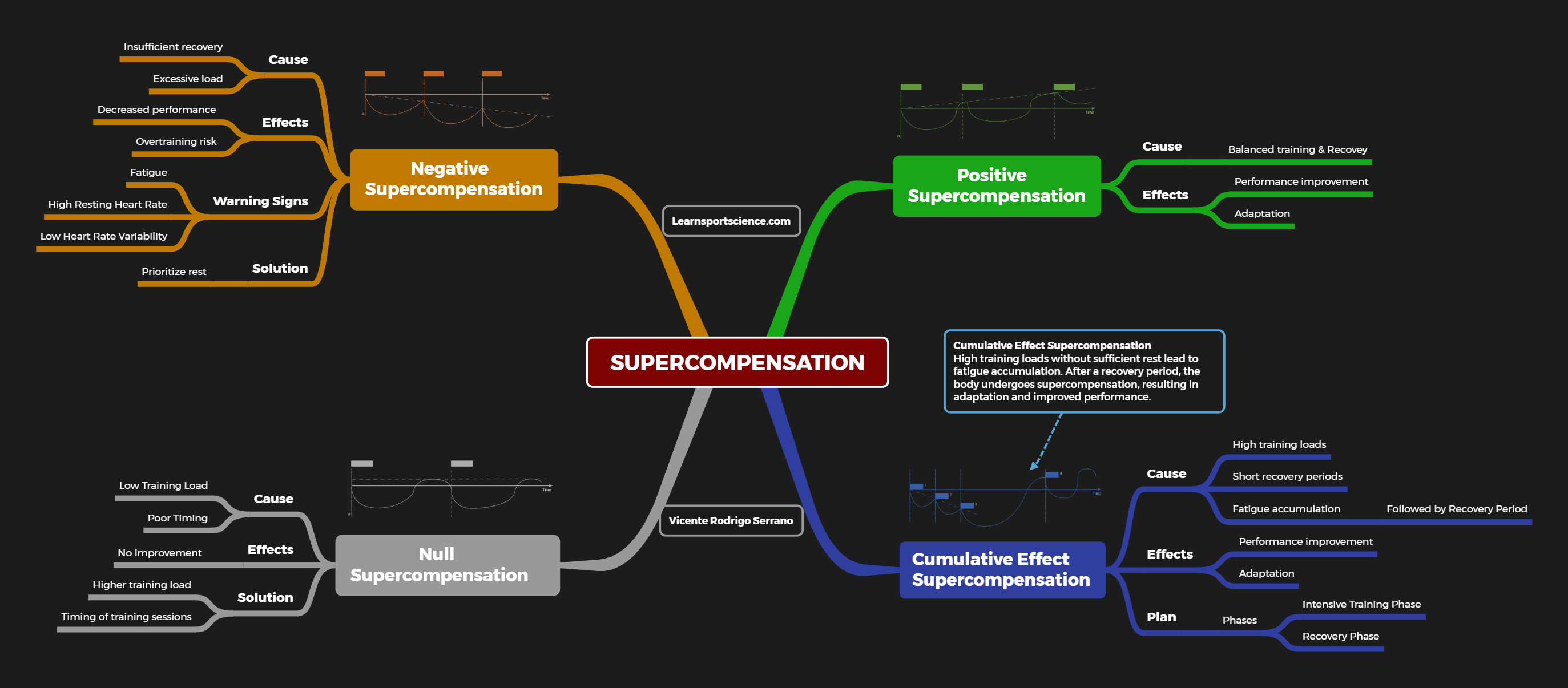
Supercompensation is a core concept in the world of sports science and performance optimization. It refers to the physiological process where the body adapts and improves performance after a recovery period following training stress. By understanding the different types of supercompensation—positive, negative, null, and cumulative effect—you can design more effective training programs to reach peak performance.
Positive Supercompensation: The Goal of Every Athlete
Positive supercompensation occurs when training and recovery are well-balanced. The stress applied during training triggers adaptation, leading to improved performance. The key lies in managing the training load and ensuring sufficient recovery time to allow the body to rebuild stronger. Athletes who achieve this balance experience both performance improvements and long-term adaptation.
- Cause: Balanced training and recovery.
- Effects: Performance improvement and physiological adaptation.
Negative Supercompensation: When Stress Overwhelms Recovery
Negative supercompensation results from excessive training loads and insufficient recovery. This can lead to decreased performance, overtraining, and increased fatigue. Warning signs include a high resting heart rate and low heart rate variability. The solution? Prioritize rest and adjust training to avoid chronic fatigue.
- Cause: Insufficient recovery and excessive load.
- Effects: Decreased performance, fatigue, and overtraining risks.
- Warning Signs: High resting heart rate, low heart rate variability.
- Solution: Prioritize rest and adjust the training load.
Null Supercompensation: The Plateau of Progress
Null supercompensation happens when training loads are too low or poorly timed, failing to stimulate adaptation. This results in no performance improvement. The fix is straightforward—adjust the intensity and timing of training sessions to push the body toward adaptation.
- Cause: Low training load or poor timing.
- Effects: No performance improvement.
- Solution: Increase training load and optimize session timing.
Cumulative Effect Supercompensation: The Long-Term Payoff
This type of supercompensation builds over time. High training loads, coupled with planned short recovery periods, result in fatigue accumulation. When followed by a well-timed recovery phase, the body experiences significant adaptation and improved performance. This method is often employed in periodized training programs.
- Cause: High training loads and short recovery periods.
- Effects: Fatigue accumulation, followed by improved performance and adaptation.
- Plan: Includes an intensive training phase and a subsequent recovery phase.
Key Takeaways for Coaches and Athletes
- Monitor Recovery: Use metrics like heart rate variability to assess recovery status.
- Balance Training and Rest: Avoid overloading the body with excessive training stress.
- Plan Strategically: Implement periodization to harness the cumulative effects of supercompensation.
- Adjust Intensity: Tailor training loads to avoid null or negative outcomes.
Supercompensation offers a roadmap for optimizing training and recovery to achieve peak performance. By understanding and applying its principles, athletes and coaches can ensure sustained progress and long-term success.
